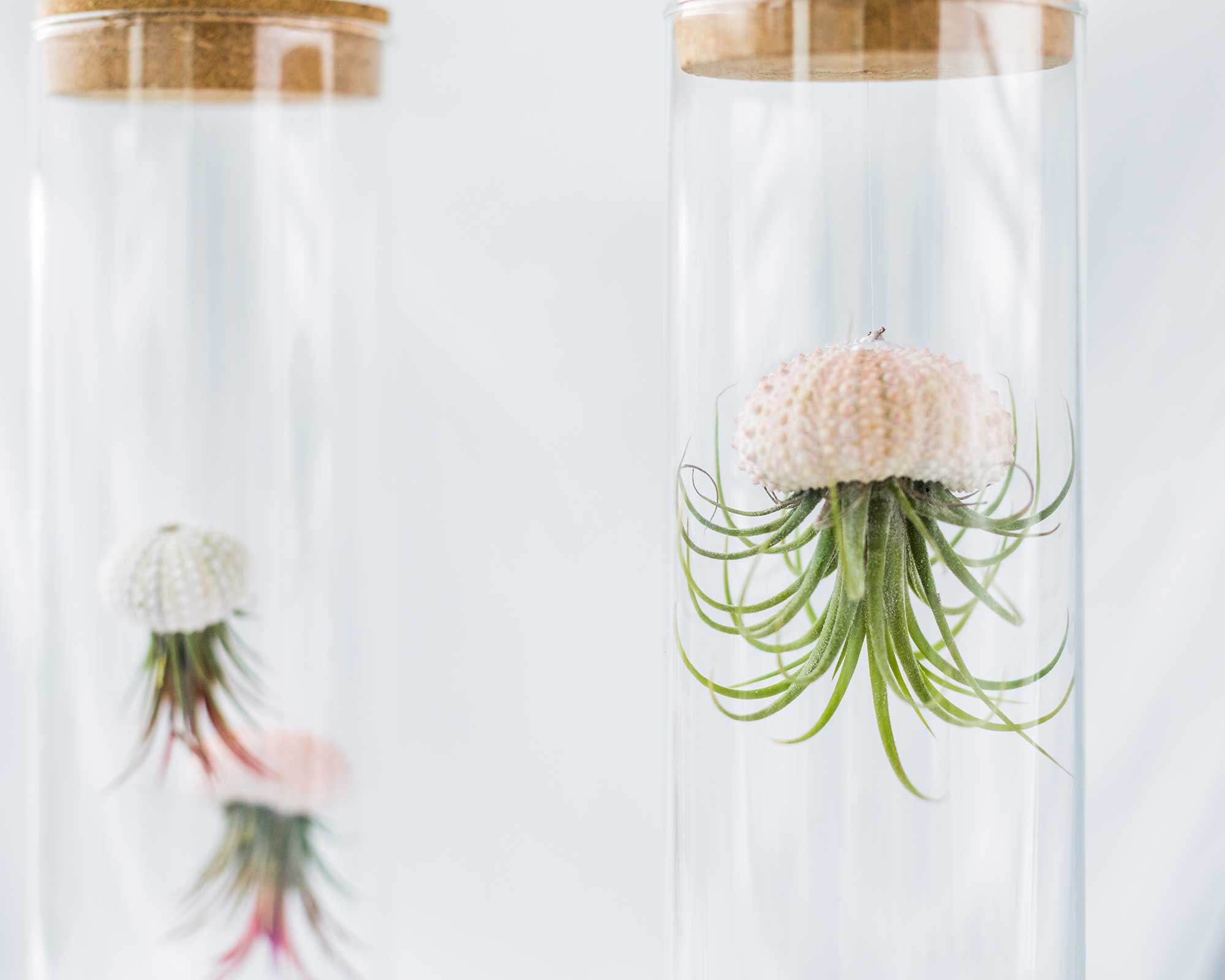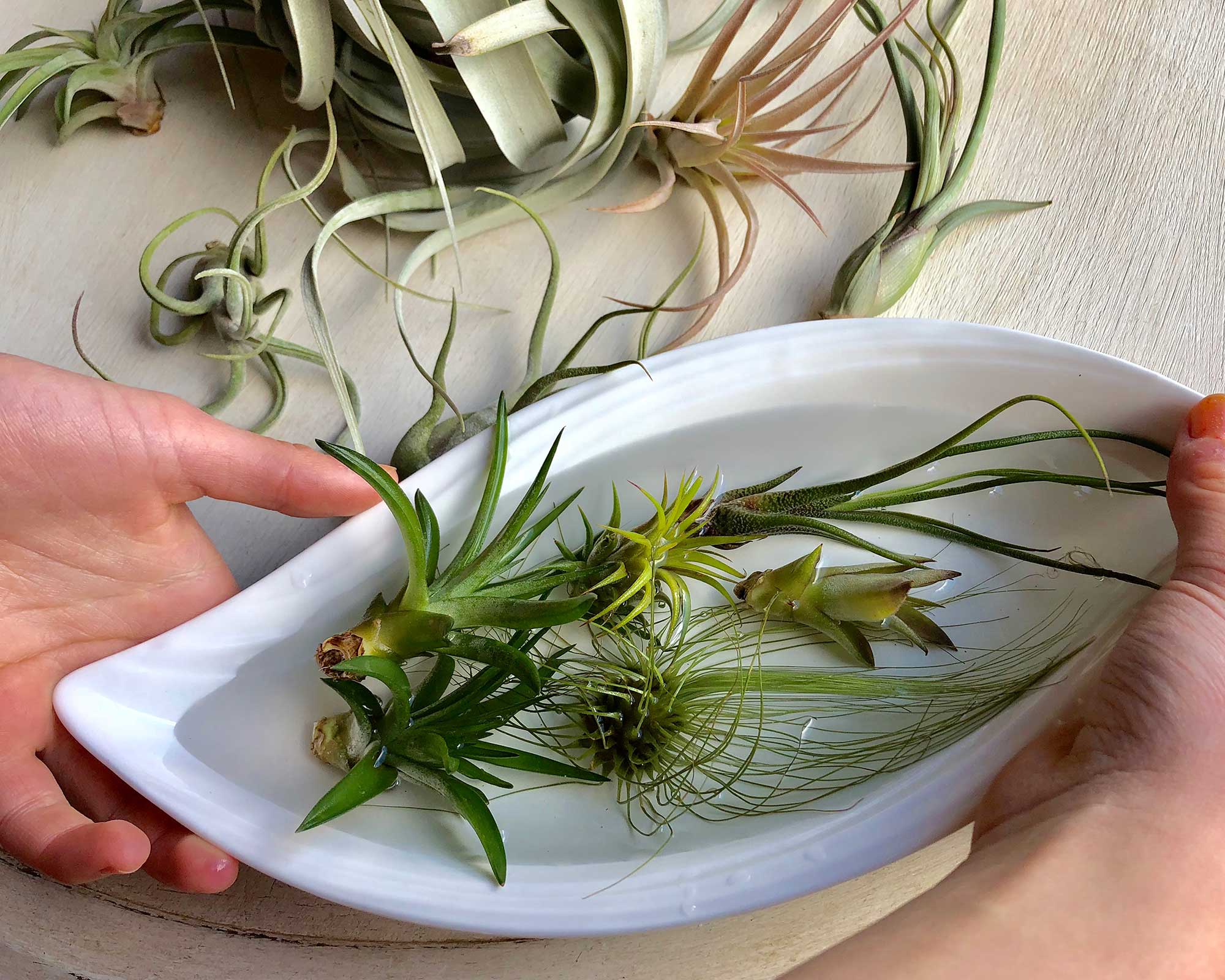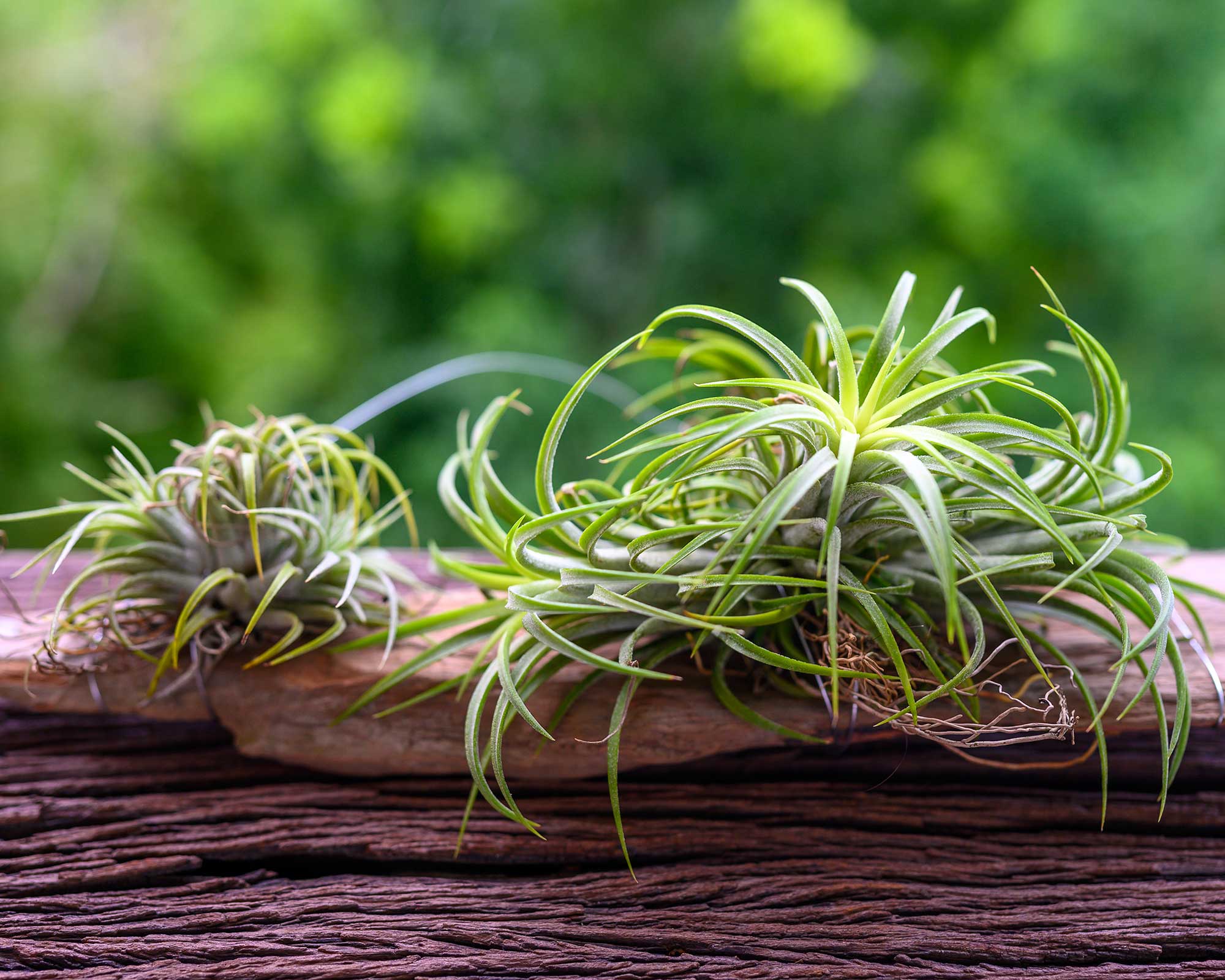
If you're wondering how to care for an air plant, we're here to help. These spiky specimens are an eye-catching addition to any indoor garden, but as they don't grow in soil, they require a slightly unusual maintenance routine.
We've teamed up with houseplant experts to get all the essential advice on how to care for an air plant at home, including the optimal lighting conditions, how to water them, and whether misting can help keep them healthy.
Below, you'll find plenty of beginner-friendly tips for tending to these brilliant indoor plants. Plus, there are lots of fun ideas for displaying them, too.
How to care for an air plant, according to the experts
Juliette Vassilkioti from My City Plants says, "Air plants, or Tillandsia, have completely won me over with their incredible diversity, boasting nearly 650 different types, and remarkable ability to flourish without soil."
However, without the proper know-how, they're not one of those easy house plants that almost look after themselves. To get air plants to thrive rather than flop, there are some important things to get right.
1. Display them creatively

Kiersten Rankel, an expert from Greg, a houseplant-care app, says air plants are epiphytes — they grow on other plants, such as the branches of trees. They absorb moisture and nutrients from the air and this is why a typical potting mix isn't necessary.
Not only does a lack of soil eliminate the need for messy repotting, but it also means you can display air plants in unique ways. Just remember they need to be somewhere well-ventilated. Juliette points out how this will avoid issues with rot or pests.
It's good news too for those with four-legged friends: air plants are pet-friendly houseplants, meaning they are non-toxic to both cats and dogs.
Kayla Gajdascz, the co-founder of Mental Houseplants, says, "Air plants can be attached to pieces of driftwood, cork, or even stones using a non-toxic adhesive. This mimics their natural habitat and creates a stunning natural display."
E6000 adhesive, available on Amazon, is often recommended for attaching air plants to surfaces. It creates a strong, waterproof bond, which will come in handy when you water them.
Kayla also suggests using suspended glass globes, perhaps in a well-lit window. "You can add small pebbles or moss for extra flair," she adds. We like this set of three hanging glass planters from Mkono at Amazon — perfect for displaying compact houseplants in small spaces.
"For a beachy vibe, place air plants in seashells or sea urchins," Kayla continues. "They can be set on tables, shelves, or even hung using thin fishing line."
Kayla notes how you can grow air plants inside glass terrariums, too. "Just ensure there's an opening for air circulation."

Get yourself an 11-13 inch natural piece of driftwood and get creative with displaying your air plants. These ones are 100% natural, organic pieces and work brilliantly for air plants, orchids and staghorn fern.

Black extendable metal drapery rods a sleek touch to these three white potted planters. You can use them for air plants alone, or combine with trailing plants for visual interest in your space. Mounting bracket included.

This little Cowboy Hat Planter is crafted from stone, and we love the fun and colorful finish for a playful pop of color to your space.
This product isn't rated yet, but we trust UO's quality.
2. Soak them in water

It's easy to assume air plants don't need water, but this isn't the case. In fact, Juliette says, "Proper watering is crucial."
Kayla says, "The watering needs of air plants can vary, based on the humidity of your environment. A general rule is to soak them in room-temperature water for 20–30 minutes, once a week.
"After soaking, shake off any excess water and place them upside down on a towel to dry completely. This helps prevent water from collecting in the base of the leaves, which can cause the plant to rot."
When caring for most houseplants, using filtered water or rainwater is better than tap water.
Leaf curl and crispy tips are usually associated with dehydration, low humidity, or mineral burn from hard tap water. Depending on the cause, try misting it more often, giving it a good soak, or using rainwater to water it.
3. Get the lighting right

Nastya Vasylchyshyna, a resident botany expert at Plantum, notes how air plants naturally grow in shady places under tree crowns. Indoors, the optimal location is a spot with indirect or filtered light, she says.
This is similar to caring for Chinese money plants. However, Paris Lalicata from The Sill highlights how some species can tolerate more direct sunlight, so it’s best to research the variety of air plant you have.
In brighter locations, Kiersten recommends observing closely for signs of sunburn. These appear as bleached spots on the sections that get the most light, she says.
4. Mist them occasionally

Juliette says, "These plants appreciate moderate humidity levels, which can be provided by occasional, very light misting or placing them in a bathroom or kitchen where humidity levels tend to be higher."
Misting is especially important during the hot summer months and times when the heating is on, adds Nastya.
We love this vintage-style copper mister from Sustainable Village at Amazon. A humidifier, such as this compact design by Rosekm from Amazon, can also help to keep the environment optimal for these tropical plants.
5. Avoid extreme temperatures

Nastya says, "Air plants can’t withstand drastic temperature changes or overcooling.
"The optimal temperature is 72–82° Fahrenheit," she says. "Don’t let it drop below 59°F or go higher than 90–93°F."
This means keeping them safely away from drafts or heat sources, such as fireplaces and air conditioning units. Otherwise, you'll be wondering a little too late how not to kill your houseplants.
6. Add fertilizer to their water

Whether caring for peace lilies, fiddle leaf figs, or air plants, a splash of fertilizer can help give houseplants a boost.
Kayla says, while not strictly necessary, fertilizing your air plant with a bromeliad or orchid fertilizer (diluted to 1/4 strength) once a month can encourage growth and blooming. "Apply the fertilizer when you water the plant."
Consider the organic orchid fertilizer from Espoma at Amazon for the job. Alternatively, you can buy fertilizers specifically designed for air plants, which can be misted straight onto the plants.

This metal mister has a timeless design and a gorgeous copper color. As well as keeping your houseplants happy, it looks pretty on a shelf.

Mist your plants with this premium, nutrient-rich, ready-to-use spray once a week to help them stay looking their best. It's suitable for all varieties of air plants.

This set of three planters makes it easy to display air plants beautifully, perhaps at different heights in a window. It's perfect for a modern interior scheme.
If you love the look of air plants and fancy another low-maintenance plant in your indoor garden, consider an easy-to-care for spider plant, too. These are slightly larger, with often variegated leaves, and make a gorgeous addition to a windowsill or desk.







